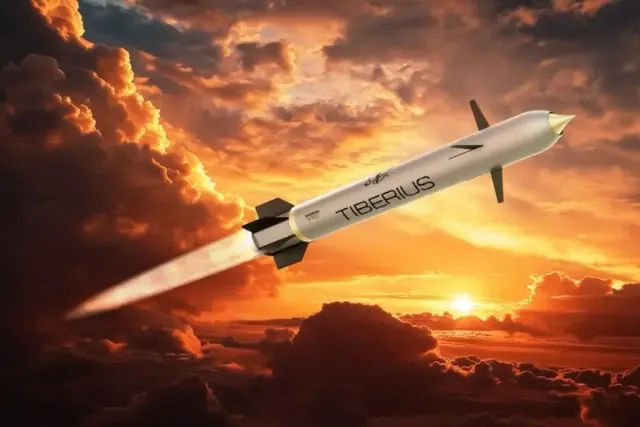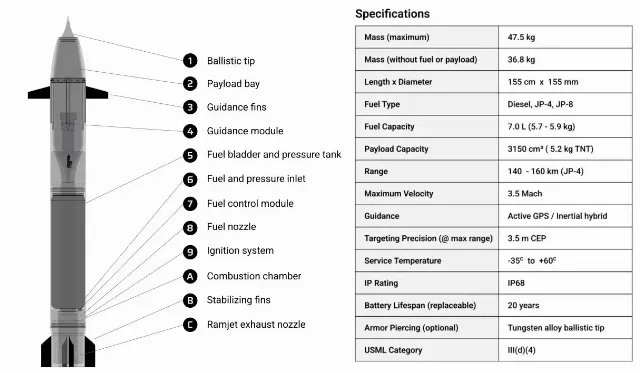 The Sceptre concept
The Sceptre conceptThe Western defense industry strives to achieve unsurpassed range and precision of artillery fire, considering progress in this direction as one of the main ways to achieve dominance on the battlefield.
Earlier, VO reported on the development by the Norwegian company Nammo of an artillery shell with a firing range of up to 150 km. Now the British Tiberius Aerospace has submitted its voice, presenting the concept of the Sceptre TRBM 155HG ammunition of the same type, which is also equipped with a ramjet engine (unlike Nammo's liquid-fueled product) and is said to be capable of delivering precision strikes at a distance of 140 to 160 km.
According to the developer, the new projectile will have such irreplaceable characteristics as high range, accuracy and economic efficiency.:
The projectile is launched from conventional NATO artillery systems and uses a RAMJET, which is activated immediately after leaving the barrel, allowing the ammunition to rise to a height of over 19.8 thousand meters. m and reach speeds of up to Mach 3.5, which exceeds the corresponding figure for one of the fastest aircraft available in the world, the MiG-31 interceptor, which reaches Mach 2.8.

Image source: topwar.ru
The trajectory and altitude of the flight reduces the susceptibility of the munition to GPS interference and electronic warfare. The KVO is less than 5 m even in the conditions of radar counteraction.
The projectile will be guided by GPS, ANN, and aiming correction using AI and a data channel in coordination with the swarm. The munition goes through the standard flight stages: launching from the barrel, igniting the RAMJET, updating telemetry in the middle of the range, active guidance correction and final descent to the target, culminating in precise detonation using a programmable fuse.
The developer positions Sceptre as a reliable alternative to more expensive and requiring special launch platforms for long-range MLRS ammunition. The price of Sceptre is less than 10% of the cost of GMLRS for HIMARS, which sometimes exceeds $ 160 thousand, and in the ER version GMLRS reaches up to $ 500 thousand.
Sceptre has a small number of parts (25 unique components in total), the ability to refuel in the field and a 20-year shelf life, which significantly reduces operating costs.
